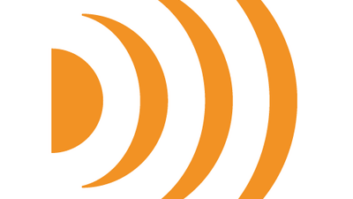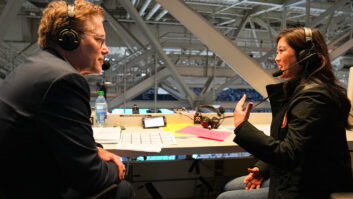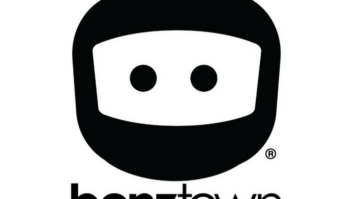DJB Radio was founded in 1995 with what was then a DOS-based radio automation system. Led since 2012 by automation innovator Ron Paley, its lineup now includes award-winning automation, logging and content retrieval software offerings.
Adam Robinson is the vice president of corporate operations of DJB and former operations manager and director of engineering and IT for the Evanov Radio Group.
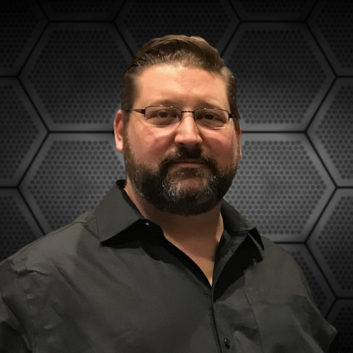 Radio World: The basic question of the last year and a half: How has the pandemic experience changed workflows for your clients?
Radio World: The basic question of the last year and a half: How has the pandemic experience changed workflows for your clients?
Adam Robinson: Change, for the most part, has been remote control, remote access and remote workplace. DJB was well positioned for that, given that our software has always been designed for “unattended use.”
We’re seeing hybrid models everywhere; some are using the studio, some are working from home; in some cases, you’ve got half of a morning show in the studio, half at home. The software is there to help them work together in a common workspace.
It’s fair to say that most automation systems had the ability to do some remote functionality. But we really got tested when users themselves started coming up with unique scenarios. Instead of asking us, they came back and said, “Hey, just so you know, we’re using your software like this.”
RW: Can you provide an example?
Robinson: Sure. WBGO — one of our biggest customers, their transmitter is in New York City — is a listener-funded jazz station. They came to us last year and said, “We need a solution to replace everything, because we need to be able to manage this remotely.” This was our dearly departed friend, engineer Chris Tobin.
We got them turned over in about eight days. We were anticipating a hybrid model, some people in the studios, some working from home and some at the transmitter site; and we would set it up so that all the elements in the background could talk to each other.
But the staff all started working remotely. They took shifts for who logged into what machine when; and they built a whole model that has no studio, no physical plant outside of three computers running at the transmitter site.
The programming people, the traffic people, the on-air staff, the producers — everybody does their work and then logs in remotely, uploads it and off it goes.
Then they started figuring out ways to automate. For instance, using our Radio Spider program, they’re able to put all of their information into a shared drive. Spider grabs it, pulls it out and pushes it to the automation system.
RW: What automation system is WBGO using?
Robinson: They’re using our DJB Radio platform, our workhorse. They’re going to upgrade to our latest platform, DJB Zone later this year; but just using our tried and true DJB Radio software platform, they were able to accomplish all of this.
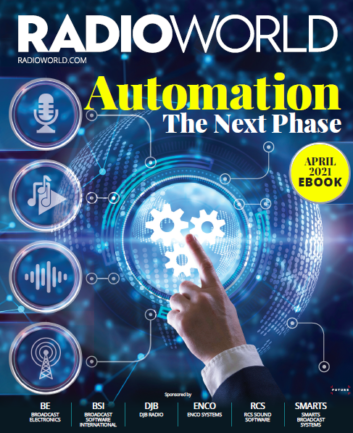
RW: What capabilities may come as a result of experiences of the pandemic?
Robinson: We’re in the process of developing apps that are going to allow for more users to access things remotely. You should be able to work from anywhere; and you shouldn’t have to use a different interface because you’re working remotely. We’re creating an environment where you’re using the same interface no matter where you are, bringing everybody together in a centralized or virtualized server space.
RW: You said the buzzword of the year, virtualization. What does that mean for a company like DJB?
Robinson: The sky’s the limit. Once we get our heads out of the physical radio space, we stop thinking in terms of tactile user interfaces, about control rooms and consoles and touchscreens, and we start thinking about radio as more of a virtual environment.
I wrote last year in an article in Radio World that we have the ability to take our automation systems and push them into the cloud. We just need a server, then we have all these apps that go on top of that to allow users to be able to remote into it.
Had this pandemic happened five years ago, it would have been a different situation; but we were already in the process of doing this centralization model, to find ways to remove the brick and mortar side of a station and make it so that clients could broadcast from “anywhere.”
RW: When you talk with clients, what concerns do they raise?
Robinson: The biggest is the reliability of public internet connections, because no matter where you are, you’re at the mercy of whatever connection you can get.
If you are in a major market, a Chicago, New York, L.A., Phoenix, you’ve got internet up the wazoo; but if you’re in a little town in middle America, you might not have the infrastructure. Because it all comes down to bandwidth.
So we’re trying to create systems that don’t rely so heavily on big bandwidth usage — to rationalize the amount of bandwidth available and create processes that allow people to experience the same level of complexity that you would in a major market, but in smaller markets.
RW: We hear a lot that this is part of a larger migration that was coming but accelerated by the pandemic.
Robinson: We were given the mandate from the biggest users of automation that they wanted to centralize and virtualize as much as they possibly could, so we were already moving in that direction.
But how do we make it so that virtualization doesn’t destroy the core of radio? How do we keep it so that your station or cluster still has that live, local feel?
A lot of that is up to the talent, but we have to provide them with tools to do that, whether that’s cameras that show the Main Street of whatever town they’re broadcasting from, or software that provides them with current weather updates from their environment. Our automation comes with built-in weather software that allows users to put in the ZIP Code and it will tell you the forecast and the current temperature and the highs and lows in whatever city you’re working in.
RW: There are free or low-cost software products that might appeal particularly to buyers with smaller budgets. Is there an argument against those?
Robinson: It comes down to two things: support and the engineering behind these programs.
I’m not going to speak ill of any of them, but these are apps that were created by software developers, they weren’t built by radio people. DJB’s software is built by radio engineers for the radio industry, and we have a whole bunch of price points that we sell at so that we can tailor our software for the smallest of broadcasters to compete with those free or very inexpensive products. And we have stuff that competes with the big guys for major market or multiple market scenarios plus virtual offerings.
RW: Tech support is something readers often ask me about.
Robinson: The level of tech support we offer is, as far as I’m concerned, everything that you need to be able to keep your radio station on the air 24/7.
Our support packages are tailored to our users. You buy a manageable annual support package from us. That includes updates; that includes 24/7 off-air support, it includes access to our ticketing system and our online resources. We’re a full-service company and we pride ourselves on our relationships. Our customers are our partners, not just people who buy stuff from us.
RW: What do you see coming as far as joint development between automation companies and manufacturers of other devices? Whether it’s a surface or anything else?
Robinson: I think that’s a natural next step. It’s the evolution of broadcasting, it’s the evolution of where we’re going. The hardware companies are building more software; and we’ve talked to all of the major manufacturers about synergies, about cross-platform development.
All of our automation products, both Radio and Zone, work really well with driver support for Wheatstone and Axia. We’re in the process of building support for SAS consoles and routing systems.
There’s going to be more commonality. If somebody asks me, “Hey, I really like Product X, can you talk to it?” Well, yeah, we probably should.
RW: Are there big improvements yet to be made in automation?
Robinson: Absolutely; but I think we’re at a point where a lot of our customers just want something simple that works.
We have “realized the dream” of automation software; and now the communication infrastructure, the rest of the world, is starting to catch up. Everything is internet-based. I’m on a cellphone, and you’re talking to me on a hosted VoIP system using a server in who-knows-where. We’ve realized the dream of being able to work from anywhere, do anything anywhere, have access to anything from anywhere; now we just need to refine it.
We also have to ask, “How many of the features that are already offered are customers actually using?” You’d be surprised to find out that for a lot of them, it’s less than 50%.
So we are looking at finding ways to make things smaller, faster, easier to use. We’re probably looking at fewer features rather than more these days.
RW: Anything else to know?
Robinson: DJB is an up-and-coming software company. Our big plusses are our support, our partnerships with our customers and the ability for us to be able to pivot quickly.
In terms of innovation, are we looking at AES67? Is that the future? Or are we looking at SIP-based servers and the Opus codec for being able to transport audio from place to place? Is virtualization going to app-based or does it continue to be core programs running on established operating systems that we create interfaces for?
These are the questions circling around our development meetings, and the only way to find the answer is to give it a shot. We have a catchphrase: “Yeah, we do that!” That’s kind of the mantra for DJB.







